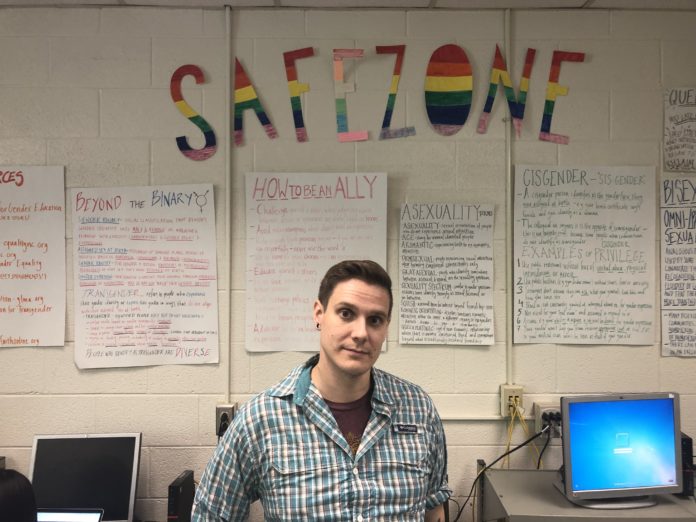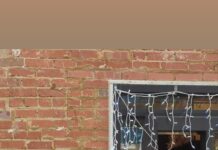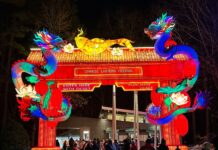
QSA at 25: Part Three
This article is the third in a series of articles examining the founding and legacy of the Queer-Straight Alliance at Chapel Hill High School.
“I neither desire nor seek publicity, but when things happen that can cause the lives of young people to be more difficult or to hurt them, I cannot stand by and do nothing,” former Chapel Hill High School English teacher David Bruton said.
During homophobic attacks targeting Bruton in 1994, he became concerned about the lesbian, gay, bisexual, transgender and queer (LGBTQ) students who witnessed the hatred firsthand.
“Yes, I was upset at the intolerant slogans, broken windows, painted buildings, burned thrift shop boxes and the [vandalized] school system [bus] that followed,” Bruton said. “However, what upset me more was what LGBTQ students would be feeling. I couldn’t tolerate the violence being done to them.”
Bruton and guidance counselor Mary Gratch officially created an LGBTQ support group at Chapel Hill High School in 1994, later renamed the Gay-Straight Alliance (GSA) and now known as the Queer-Straight Alliance (QSA). One of the enduring parts of the original GSA is safe zones.
A 2002 study by Nancy Evans at Iowa State University found that the implementation of safe zones, which are spaces or communities that are understanding and do not tolerate discrimination, had positive effects on the visibility of LGBTQ people.
“In the beginning, we had the students identify teachers that they thought would be allies. So even if the teacher had never made a statement of inclusion, they suspected that they could talk to the teacher and say, ‘Can you have a safe zone classroom?’ Those were the first teachers we taught,” Gratch said.
Gratch considered the GSA’s safe zone training as a vital step in educating teachers about being inclusive of LGBTQ students and preventing homophobia and discrimination in the classroom.
“The training was important because it helped teachers practice using more inclusive language to know what to do if they recognized homophobia in their classrooms and to examine their own biases,” Gratch said.
Science teacher Alan Rissberger, who was an advisor for the GSA for over ten years, created a safe zone in his classroom in 2000, when he started teaching at Chapel Hill High School.
“[The safe zone] gave [students] a place they could go, somewhere they could be themselves,” Rissberger said. “I hope that it gave them a little confidence and helped them get through school and some of the stuff they were dealing with. For a lot of them, school was the only refuge that they had.”
Former teacher Ken Stewart, who taught Spanish at Chapel Hill High School for 30 years, called the safe zone “a very visible presence around the school.”
Safe zones at Chapel Hill High School were often indicated by a sign of a pink triangle in the doorway, some of which are still up around the school.
Gratch admitted that seeing a safe zone in a teacher’s classroom might not be enough for students to feel safe enough to talk with a teacher.
“Hopefully, it made a student who was coming into the classroom for the first time think, ‘Okay, that’s nice to see,’ but students have to have a relationship to go to [a teacher] and feel safe to talk, and that builds over time,” Gratch said.
Teachers at Chapel Hill High School still implement safe zones 25 years later.
Online learning facilitator Daniel Reinholz, the current advisor of the QSA, has a safe zone sign on the door to his room and posters with LGBTQ definitions on the walls, which he put up after attending safe zone training at the University of North Carolina a few years ago.
Reinholz learned of the training through an email sent to all staff and decided he wanted to attend a session, but, as an online learning facilitator, was not accommodated with outside training, so he took a day off and signed up separately.
“As a queer man who experienced physical and mental abuse when I was in high school, attending [a session] and creating a safe zone resonated for both protecting myself and my students,” Reinholz said.
Reinholz believes that safe zone training is essential to protect LGBTQ staff and students.
“Safety zone training should be a mandatory annual training for all staff in both public and private schools, period. Ignorance and complacency lead to unnecessary suffering,” Reinholz said. “Each new safe zone would expand the opportunity for LGBTQ people to feel safe in their surrounds and better able to focus on academics and their path for success.”
For one of QSA’s directors, senior Claire Woodrow, safe zone signs provide some comfort, but she considers the words and actions of teachers themselves to be more important.
“If I notice a safe zone, it usually makes me feel a little better about the environment, just because I know the teacher has put effort in,” Woodrow said. “Personally, [a safe zone] does not mean much because a teacher’s actions, and how they conduct their classroom, are more important than a sign.”
Woodrow acknowledged that although teachers are supposed to have taken a course in inclusion before making a safe zone, many teachers hang safe zone signs without having completed the course.
“However, if a sign makes someone feel accepted, hanging it is not an insignificant action,” she said.











